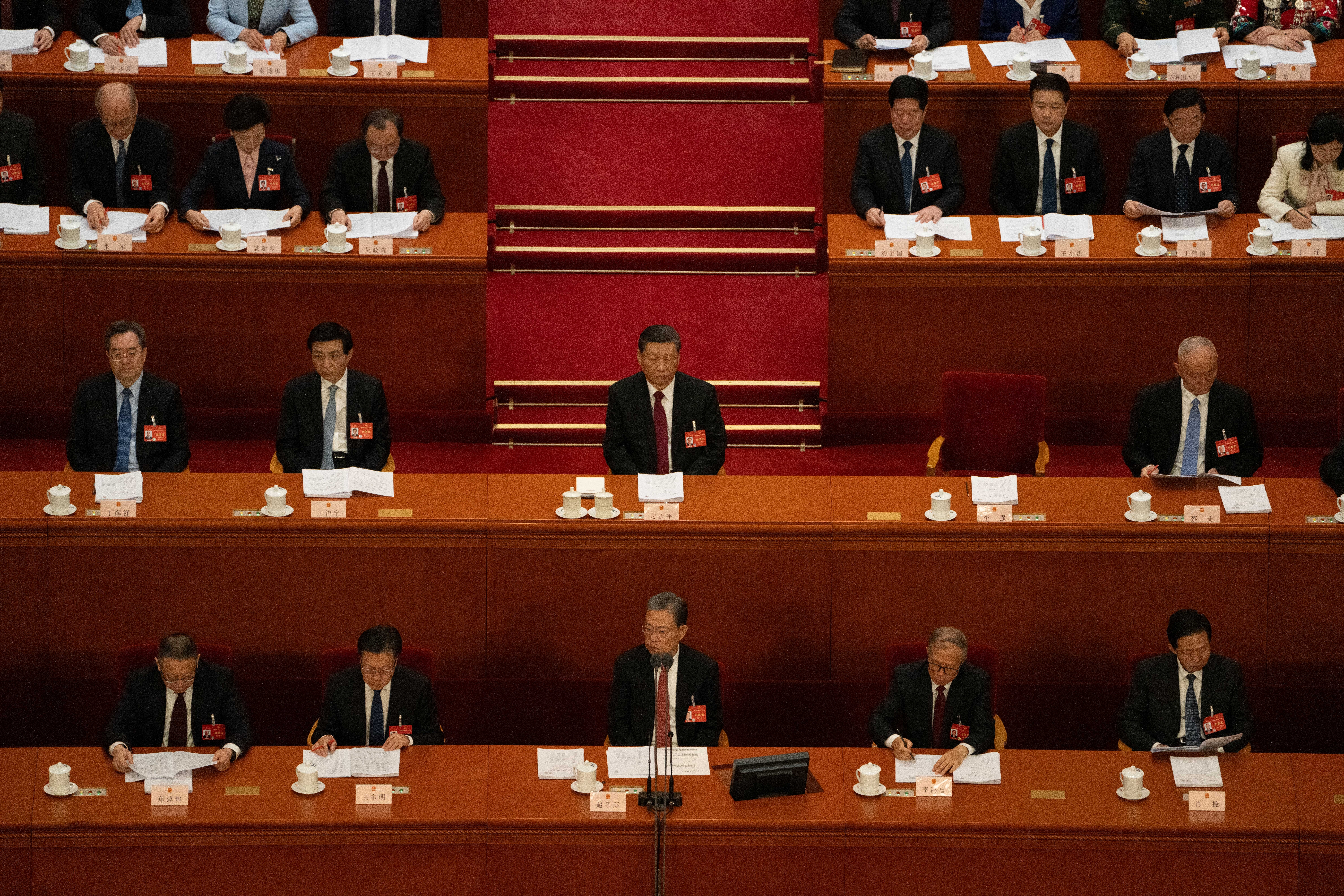Lithuania bears the scars of a dramatic fall from regional power over the past centuries – in the fourteenth century the Grand Duchy of Lithuania was the largest country in Europe – suffering dismemberment, occupation by Russia and Germany and three separate unhappy periods as the Lithuanian Soviet Socialist Republic – in 1918 to 1919, 1940 to 1941 and 1944 to 1990. Independence in 1990 was followed by membership of NATO and the European Union in 2004. These times are written on the body of the state and the people, now just under 3 million, in memories of exile, either to Nazi concentration camps (the fate of Jews who were not murdered during that occupation either by German forces or local collaborators), the 130,000 sent to the Gulag after being deemed suspect by Moscow, or fleeing to the West. There was endemic antisemitism in a country that saw the Jewish population fall from about 7% of the population before Nazis arrived in 1941 to about 0.12% after the war, and a strain of virulent nationalism is still present (though much less so than in Poland now, to which Lithuania was joined in its heyday).
Lithuania’s time as a “socialist” state, and the impact of Russian imperialism and Stalinism has been a significant obstacle to building a democratic socialist society. The Soviet Union eventually acknowledged Lithuania’s 1918 declaration of independence before deals were made between Stalin and Hitler; then there was the structural assimilation of the country as a Soviet Republic after the Second World War. It is in a precarious geographical position with shifting borders. Lithuania, a mainly Roman Catholic country, is bordered by Latvia to the north, and then, running clockwise, by Belarus to the east, Poland to the south west, and Kaliningrad – a Russian exclave to the west – which leaves it a little bit of coast on the Baltic Sea just above Kaliningrad.
There are three main sections in this description of what I learnt about Lithuania – on Stalinism, Fascism and Identities, which include emerging alternative left-wing movements – but the three threads of narrative are necessarily woven together, in histories of Soviet rule, antisemitism and resistance that occasionally blur those three aspects of history and contemporary politics. The experience of Russian imperialist and Stalinist rule has made this a very difficult context for socialists to operate.
1. STALINISM
First stop after driving south from the capital, Vilnius, was Druskininkai near the border with Belarus. The road down was through flat countryside, open fields and then forest, warnings that deer may be loose, and then, as I got closer to Druskininkai, there were cars at intervals at the side of the road with pots of jam and mushrooms for sale on car bonnets or on little tables, a first indication of local produce and of locals needing money from its sale. Druskininkai is, I discovered, a longstanding holiday spa town; the bearded guy in the information centre told me that there were nine large spa resorts in the town. He was happy to tell me anything, but his face fell when I asked where I could get vegetarian food; that was something he did not know, he said; it turned out that there was no problem, and oat-milk was available with cappuccino in most of the cafes. Druskininkai was developed as a spa resort by the Russian overlords, and then by the Polish aristocracy, and then by the Soviet administration. There is a red-brick Catholic cathedral and a stunning Russian Orthodox one in the centre. Families wandered the grassy lakesides and ate ice-cream, and travelled up and down to the indoor ski-slope complex by funicular, and pottered around on electric scooters, and so did I, but I was not here for this. I was here for Gruto Parkas.
Relics
Gruto Parkas is a Soviet-styled theme-park in the south of the country, founded in 2001 by a mushroom tycoon, and known locally as “Stalin world”. This was a grim, mostly empty place that had gathered together statues of old communists which had been removed from plinths across the country after 1990. I saw less than twenty other visitors during my visit, and most of those were with their kids in the playground area girdled by old rocket launchers and other Russian weaponry. It looked like the families were lured in not by the statuary and exhibitions in the wooden huts – mostly lines of plaster and metal busts and portraits and woven carpets of Lenin and Stalin – but by the poor bears, kangaroos and peacocks and other assorted animals crammed into the small cages.
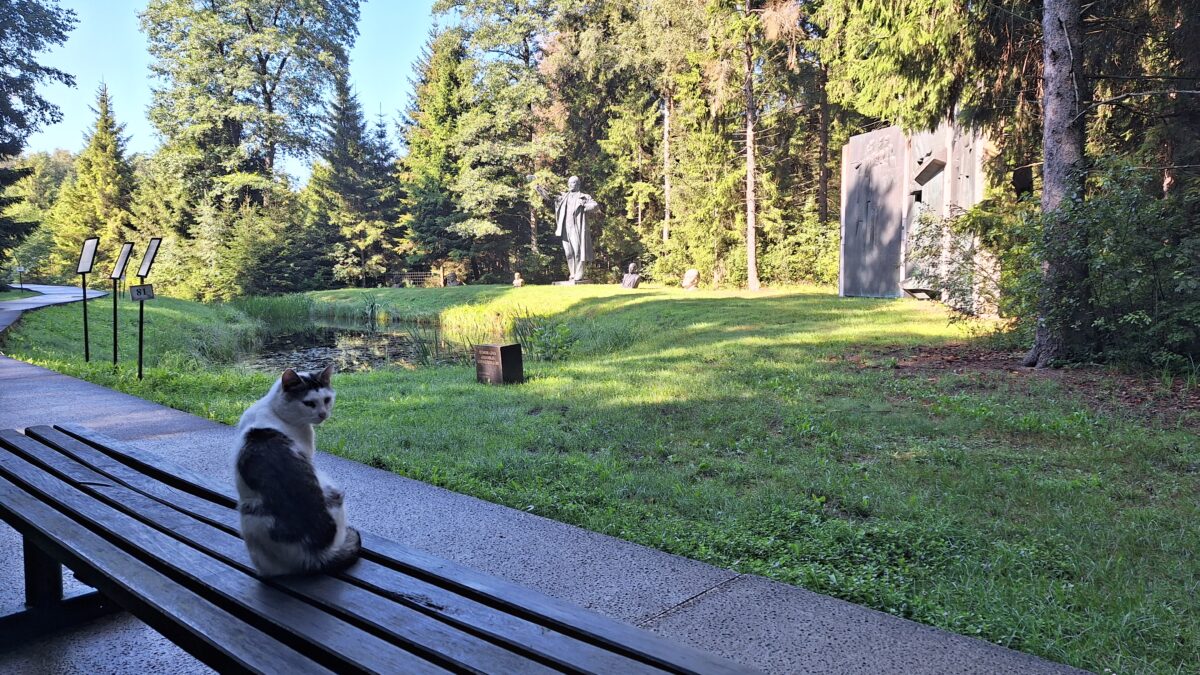
The statues of Lenin, one from the main square in Druskininkai, and Stalin and Lithuanian Communist Party leaders were accompanied by some commemorations of the work of the “partisans” who went into the forests and then conducted a guerrilla campaign against the Soviet occupation, at times fighting alongside the Nazis and later, after the war, aided by Western anti-communist support groups and state intelligence services. A large sign at the entrance to the park in Lithuanian, Russian and English declares that “Historical references have been made by Genocide and Resistance research centre of Lithuania.” There are many such memorials for the partisans in the countryside.
In Grutos Parkas there were also explicit celebrations of the murder of Komsomol (the All-Union Leninist Young Communist League). There was on display in the path leading to the park ticket desk a train that was used for deporting recalcitrant locals to Siberia. More disturbingly still was the description of Lithuanian Communist Party, LCP, leader Icikas Šmuelis Meskupas-Adomas who was once secretary of the Communist Union of Youth, who spent time in a labour camp, fled to the Soviet Union and was then was killed in 1942 back in Lithuania fighting the Nazis. The information plaque in front of his statue at the side of the forest path describes his education in a Jewish high school and then at Kaunas University, and then noted that he “seeked to keep the traditional jewish communists influence upon LCP.”
It is true that there was active involvement of Jews in the Lithuanian left, first through the Bund, and then in the Lithuanian Communist Party, a radical heritage that has at times been used as an antisemitic weapon against them but has also been disavowed, covered over by the right in the community locally and in exile in a bid to be thought respectable and in alliance with the Israeli state. As with the Nazis, one of the most potent antisemitic propaganda tropes was that the main threat was “Judeo-Bolshevism,” and many massacres of Jews carried out by Lithuanian nationalists were driven by claims that the Jews were communists. I chatted to a local Lithuanian-born rabbi in a Chabad-Lubavitch centre in Druskininkai, who was keen to meet my Jewish partner due to arrive soon in the country, and he told me that the centre really only operated in the summertime, mostly catering, he said, for Israeli tourists.
Russia
Many of the translated Lithuanian literary works revolve around the paranoid atmosphere of Soviet times. Stalinist rule continued Russian imperialist control in a bureaucratic and brutal suppression of any dissent, and has now been succeeded by threat from the Putin regime. One example in literature which captures something of this atmosphere is Ričardas Gavelis’ (1989) Vilnius Poker, translated in 2009, a hallucinogenic journey around the capital in which “Everything, absolutely everything depends on you yourself; even Their tentacles don’t reach as deep as They would want.”
In the south-west is the Suwałki region, now thought by some commentators who are anxious about what Putin might do next to obstruct NATO to be its “Achilles’ heel,” and so as possibly, they say, the “most dangerous place on earth.” The “Suwałki corridor“ is the 100 kilometre or so border region between Lithuania and Poland that runs between Belarus and Kaliningrad, a little gap that Russia might want to occupy in order to block land links between Lithuania and Poland, two EU and NATO states. At the moment there are flights overland and trains through Lithuanian territory to Kaliningrad on the Baltic coast. Enemy occupation of the corridor would provide a land bridge between a Moscow-friendly ally, Belarus, and what is effectively now a Russian territory exclave.
It would have been tricky to get into Kaliningrad and even the excuse that it would be nice to visit the place where Western Enlightenment philosopher Immanuel Kant lived and worked all his life would not go down well; recent official propaganda has Kant down as a “Russophobe.” C. J. Schüler’s interesting, if a little amber-heavy 2020 travelogue Along the Amber Route: St. Petersburg to Venice includes an account of his journey down from Palanga and Klaipėda on the Baltic Sea coast down the Curonian Spit into Kaliningrad. It does seem a grim run-down place in that account and, though I did spend many hours investigating how to get there, it eventually seemed like a bad idea. Schüler is on the track, as the title of his book indicates, of the harvesting and trade in amber, which you are supposed still to be able to find on some of the local beaches.
While I was there in August 2023 more checkpoints with Belarus were being closed by the Lithuanian authorities, and locals were fleeing from some villages close to the border, fearful at the location of Wagner group units near the border in Belarus and the prospect of them moving across. Tourism was down, cancellations also the result of unease about the consequences of the invasion of Ukraine, and Belarus’ stance. There were long lorry queues on the road down to the border.
Soviet rule also created difficult questions about what would count as “reparation” for the atrocities and forced exile. The brutal structural assimilation of the country into the Soviet Union after the Second World War meant that much large private property was abolished, collectivised in a corrupt bureaucratic manner but also redistributed. That meant that many property claims by those who had been exiled or by their descendants were difficult to level against current private owners, for such private ownership in most of the country no longer existed. Privatisation after 1990 did not then always proceed through restoration of ownership but through administration and leasing arrangements.
Restoration
The largest Lithuanian manor estate at Pakruojis had been owned by a German family until the war; Baron Wilhelm von der Ropp obtained the estate in the eighteenth century as a wedding gift, dowry from his Lithuanian bride. A member of the different family which was now running the estate as a bizarre “Midsummer Night’s Dream” themed flower festival and hotel told me that the original owners, the Ropp family, had actually visited the manor in the last few weeks after having had to let it go when the Soviets arrived after the Second World War. They had a choice, I was told, either give up the estate and accept nationalisation or “pay a visit to Siberia”; they left Lithuania, and then attempted to regain ownership after 1990, but failed. The municipal government then agreed fifteen years ago to lease it to the current “owners” for 99 years on the condition that the manor was restored, which is being undertaken in gaudy glory for tourists.
There is a restored wooden synagogue in Pakruojis village which, unusually, is decorated with folkloric images and one of a train that was added in 1885. Jews played a prominent role in the town, in business and health provision after the Jewish community was invited back into Lithuania after the population was depleted during the Black Death, a plague they were also at times blamed for. The Nazis took the whole Jewish population to the nearby Morkakalnis forest and murdered them in August 1941. There is a menorah-shaped stone memorial in the forest off the road that runs between the village and the manor to 300 Jews which notes that there were also local accomplices involved the massacre. Family belongings were piled up in the local fire station, which still stands and had been staffed by Jews, so locals could come and choose what they wanted to pillage. Glossy tourist brochures in the local information office try to do justice to this history, including such information and accounts of the lives of original owners of homes in the village. We walked from the manor to the village on a sunny day passing families supporting their children participating in a noisy BMX-race event.
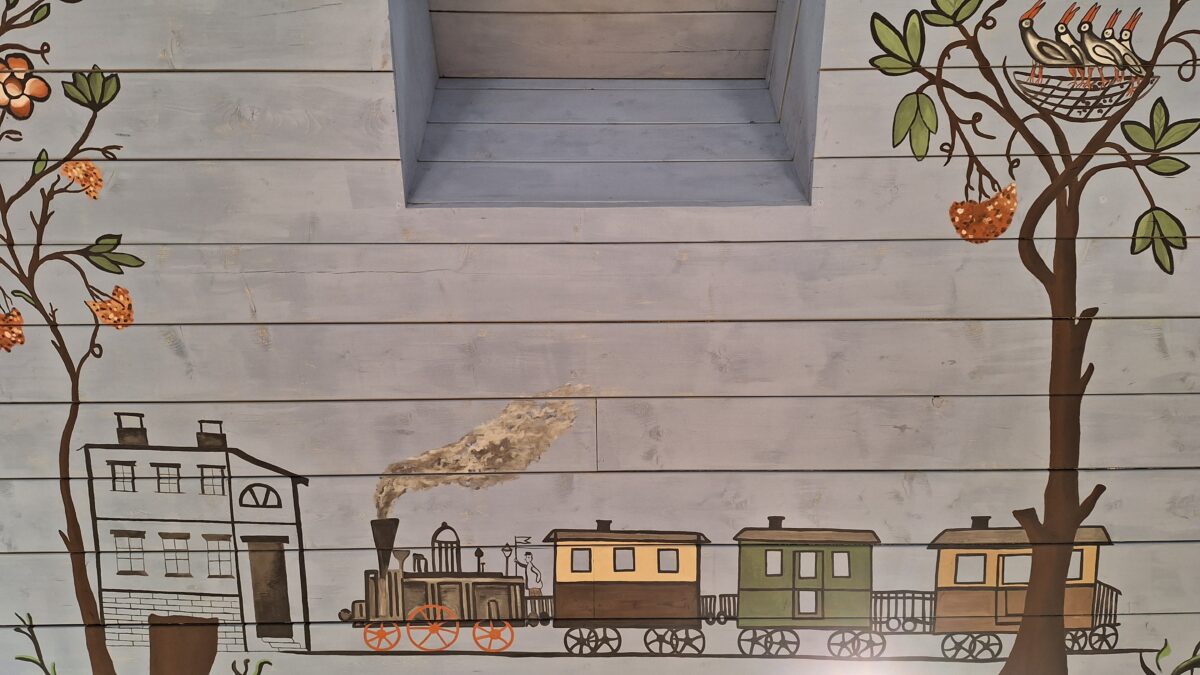
The preoccupation with Soviet occupation understandably bleeds into memory of Russian imperial rule. A glossy magazine “Iliustruotoji Istorija” in the toilet of one of the places I stayed had a picture of Tsarina Alexandra on the cover with a sinister image of Rasputin hovering in the background. This “illustrated history” magazine cover pointed to the feature story inside in which there is the same picture of Alexandra with, on the facing page, another sepia image of Rasputin and, above him, a crowd carrying a banner emblazoned with the word “communism.”
In Grutos Parkas there is a reproduction of the map that Stalin and Ribbontrop signed in 1939 after scrawling a line in blue pencil from north to south that divided Lithuania into separate spheres of influence. This “non-aggression pact” between Stalin and the Nazis sealed the fate of many activists as well as disabling resistance and marking communists as part of the enemy in popular consciousness. Soviet rule also betrayed Jews, with property seizure and deportation directed at the community in a continuation of Russian Tsarist antisemitism that Stalin played to at home and abroad.
It is the Soviet occupation that is sometimes seen by the right as the main scar on the country, with many parks, not only Grutos Parkus, boasting sites of memorials to the anti-Soviet partisans. The 23 of August is marked each year in Lithuania as the anniversary of the Hitler-Stalin pact which both divided the country but also in a strange way united it in the misery of occupation, with the risk that this experience and representation of past oppression would at times lead to an equivalence being drawn between Soviet occupation and deportation on the one hand, and Nazi mass murder on the other.
2. FASCISM
Before the Stalinist repression were the atrocities carried out by the Nazis. Fania Lewando’s The Vilna Vegetarian Cookbook was first published in 1938. I have a 2015 English-language version on a shelf in my kitchen, but it was just by chance that a copy of the original Yiddish-language book was found in an antiquarian book fair and translated. The book contains recipes from Lewando’s “Vegetarian Diet Canteen” on “German Street” in Vilnius, now Vokiečių Street, one of the few streets in the city where Jews were permitted to live. The Lewando restaurant was on the corner with Žydų Street (“Jewish Street”). There is a Stolpersteine memorial stone in the pavement for Fania and her husband on the other side of the road by number 14 Vokiečių Street.
The cookery book tells us that Fania, who had attempted to get her recipes taken up by the Heinz company, failed to get to the United States, but it does not say that she was refused a visa by the authorities there, and so she perished when the Nazis took over; basically, racist immigration controls kept the huddled masses out and condemned her and many others to death. This should be a reminder that while there was collusion between the Stalin and Hitler during the 1939-1941 “non-aggression pact,” there was also much effectively deadly collusion between Western states and Hitler, states that also pandered to anti-communist fear of those who would threaten large private property, fear sometimes also shading into “Judeo-Bolshevist” conspiracy themes.
Ghettos
The Vilnius Jewish quarter and then ghetto is marked on street-side signs, mainly for the benefit of those on guided heritage-misery tours. I stood reading one of the information boards in a little cobbled street while a couple who were Lithuanian, I guessed, also stood reading and pointing and commenting. One of them sighed and pointed to the part of the text which read “During the mass killing actions, all the residents of the Small Ghetto were killed and this ghetto ceased to exist;” the other one was evidently less impressed, tutting and muttering while they pointed to the part of the text that read “During the period of December 1941-March 1943 there were no mass killings of ghetto prisoners as the demand for labour force in the German war economy increased.” I didn’t know what they made of these statements, and what the basis of their disagreement was, and I did not want to ask.
There are the remains of a Jewish cemetery in Kavarskas north of Vilnius; the town had 500 Jews living in it in 1940, and there were five left at the end of the war. Lithuanian nationalists ran riot before German troops arrived and arrested Jews who were accused of being communists. The Germans shot these prisoners as soon as they arrived, and shortly afterwards the rest of the Jewish population were murdered in the Fivonia forest. There have been local attempts, by Lithuanian inhabitants of the village, to save what is left of the Jewish cemetery in Kavarskas against the encroachment of a cement works. An amateur map is available on the Internet made by a local Jewish resident in 1940, and from this it is possible to plot the location of the synagogue; now, as far as I could make out, it is now a Saab repair garage.
A particularly notorious event was the “Lietūkis Garage Massacre” in Lithuania’s second city Kaunas. During this pogrom, which took place before the Germans had set up their own administration that systematically rounded up and killed local Jews, around fifty Jews were made to assemble in the courtyard of a garage at 43 Vytautas Avenue in the centre of the city. The photographic evidence of this massacre has made it difficult to deny and specifically implicates local Lithuanian fascists (even though there are claims that one of the main figures involved and caught on camera, the so-called “death dealer,” was actually from a German army unit).
The wiping away of this event from memory takes some bizarre and horrible forms, in, for example, the development of apartments in the Lietūkis complex which is then advertised as “a building with history” without, as the remaining local Jewish community noted, spelling out what that history was. There is a very small memorial stone marking the massacre in the yard of the building on which we placed some stones. Someone comments on Tripadvisor for the memorial that they thank heavens for the State of Israel (one of the few times I had sympathy with this tragically mistaken but understandable response to the brutal destruction of whole communities simply wanting to live in peace).
Exile
The 2019 film Isaac (Izaokas in Lithuanian) is a grim reminder of this event, and has some gruesome graphic reconstructions of the massacre before homing in on the return, in 1964 of one of the main characters, a film director, from exile. He gets an enthusiastic welcome to the Soviet Socialist Republic of Lithuania before the Russians get wind of his possible complicity and commence investigations. The film is named after and so ostensibly about the murder during the massacre of a Jewish man ‘Izaokas’, possibly by a local Lithuanian who then carries with him guilt about the killing. The film’s publicity website does explicitly acknowledge that the massacre was carried out by Lithuanians before glossing the plot as being about a love triangle; “This film is about relationship between two friends who where [sic] separated by historic circumstances, shock of war, traumas and experiences of exile, but who shared the love for the same woman.”
The opening titles for the film actually frame the event as being, they read, the result of Lithuanians “influenced by Nazi propaganda” before going on to refer to later Russian deportations to Siberia “regardless of ethnicity,” implying that the victimisation of the whole population was perhaps worse. It seems in the film, and this is a recurring theme in much historical reflection in Lithuania, that the behaviour of the Russians is on a par with, if not worse than the behaviour of the Germans; the bureaucratic heavy-handed official investigation into the massacre sets in train a series of deaths. A main character in the film muses on the difficulty of Lithuanians standing up for themselves as “the problem of our small country.”
The character who returns to make a film about the massacre has (plot spoiler), it turns out, acquired script details from the exiled Lithuanian author Antanas Škėma. There is an unpleasant reflexive aspect to this, for it is the detailed knowledge about Lietūkis that is taken from Antanas Škėma and put in the script that then implicates the director. It is an unpleasant reflexive aspect because the film itself is an adaptation of a 1961 Škėma novella also called Izaokas. This novella has the weird status of being a possible encrypted confession of some kind. The manuscript of that novella was handed over by Škėma to a friend at a liberal Lithuanian Diaspora literary convention before Škėma was killed in a car crash directly afterwards in Pennsylvania while returning home from the convention.
Antanas Škėma’s major novel, his 1958 stream-of-consciousness White Shroud (Balta drobulė, eventually translated into English in 2017) is also heavily autobiographical, raising further questions about what he was up to in Izaokas. White Shroud has as its protagonist a lift operator in a New York hotel, someone who has a nostalgic yearning for the old times in his home country, and there are flashbacks to times during the war in Lithuania and then in Germany in a “displaced persons” camp. Škėma himself did work with the Nazis against the Soviet occupation during the war, and then fled to Germany before making it to the US where, among other occupations, he worked as a lift operator in a hotel in New York. What brief references to Jews there are in the book are not particularly flattering.
Blame
The Nazis did further whip up existing antisemitism, but it is then too easy to characterise the whole Lithuanian population as guilty (a lazy racist trope that mirrors the racism it is claiming to expose). The Encyclopaedia Judaica entry on Lithuania includes testimony from a commander of the German occupation Einsatzgruppe “Action Units” responsible for mass murder of Jews, which include the observation that “On the surface the impression had to be created that it was the local population which had initiated the anti-Jewish measures as a spontaneous reaction to their oppression by the Jews for many years and to the Communist terror to which they had been exposed in the recent past.” The 1941 internal report continues, “evidence had to be created in order to prove, at a later stage, that it was the local population which had squared their own accounts with the Jews and the Communists,” and it notes that “the orders given by the German sources had to be concealed.”
There is an organised right now in Lithuania, though it functions more as a network of pressure groups than shock troops. The resistance to Soviet rule was, by 1990, a mass movement and welded together right-wing forces and a liberal opposition. Not surprisingly, the right and liberal alliance quickly embarked on a neoliberal privatisation programme after taking power in the first free elections for many years and then in later periods of government. This was first in the form of Sąjūdis, the “Reform Movement of Lithuania” that had been organising against Soviet rule through the 1980s, and then in various permutations of the “Homeland Union”, a Christian-Democrat party, and a party formed after 1990, the “Liberal Union.”
More surprisingly, perhaps, and an indication that the demonisation of the Communist Party did not run as deep as the current government would like, these post-Soviet periods of government have been interleaved with those run by the “Social Democratic Party of Lithuania,” basically the old Lithuanian Communist Party. One leftist I spoke to who had been a member of the Social Democratic Party, and worked inside it as part of a left caucus – a kind of hopeful entrism, let us say – put this down to the electorate searching for stability after the turmoil of the transition, which was considerable in the three Baltic states, and neoliberal economic shock treatment. The image of the pre-1990 regime was that it was, at least, a time where there was health and welfare support and some kind of guarantee of employment and rights at work.
3. IDENTITIES
There are minorities and there are alternatives, some of them religious and hearkening back to their own versions of their past, and some more secular and looking to the future. There are, for instance, complaints by Muslims at the lack of mosque in the capital; there are four in the country, still mainly for the remaining Sunni Tatar community who came in two waves of immigration from the south, at the time when Lithuania stretched, as they say, “from sea to sea” and then during Stalin’s mass displacement of the Tatar people. The other longstanding Turkic minority are the Karaims who practice the “Karaite” faith; although an offshoot of Judaism, the Karaims do not consider themselves to be Jews (and neither did the Nazis). Roma were targeted by the Nazis, and life for them now in Lithuania is not easy, suffering exclusion and stereotyping.
There was, we must remember, a radical left in Lithuania. Lithuania was a main base, for example of the “Bund,” the General Jewish Workers’ Union of Lithuania, Poland and Russia. The Bund, which was formed in 1897, was one of the founding organisations of the Russian Social Democratic Labour Party, out of which the Bolsheviks (misnamed for the “majority” of the RSDLP) emerged. The Bund had its own representation as a left organised current in local Lithuanian state bodies, and expressed a strong secular and socialist tradition inside the Jewish working class, one that was sidelined by the main more conservative organisations and then all-but extinguished in the Second World War.
An admired writer is Jurgis Kunčinas, who died in 2002. His strange modernist and sometimes surreal novel Tūla won awards following its publication in 1993, and it was translated into English in 2016. The narrator visits the old haunts of his lover Tūla, sometimes in the form of a bat, and obsesses about the relationship while recalling times in Soviet-administered alcohol rehabilitation centres in Vilnius.
Tūla includes some telling descriptions of hitch-hiking in Ukraine, and there some telling stereotypical images of Lithuanians in other parts of the USSR. To them, the unnamed narrator comments, “Lithuania looked like the ‘cultured West,’ where people—sober and smiling!—walked on sidewalks, drank coffee, and didn’t spit on the lawn.” A brief encounter with a lorry driver who takes the protagonist back towards the Lithuanian border has the lorry driver asking “How come those Lithuanians are always unhappy about something? Other people are people, we all suffer together, but we don’t moan and groan, just the Lithuanians do. Tell me, what do they want?” Our narrator makes a mistake in his reply; “Freedom! I unguardedly sighed, and he got pissed. Barely stopping, he suddenly leaned over, opened the door, and shoved me so hard I fell out backwards.” A recurring motif in the novel which, we are led to understand, applies both to Soviet and Nazi rule, for this is described as being on graffiti and then repeated at points in the novel, is “Wir sind ein okkupiertes Land,” we are an occupied country.
Užupis
There is a curious cryptic little film of the book on YouTube which gives something of the atmosphere of the book and of the bohemian suburb Užupis where it is mostly set. Užupis (or “the other side of the river”) configures itself as a separate micro-state, and is humoured by the Lithuanian state authorities as a separate entity with its own flag and passport. This is the Republic of Užupis, “independent since 1st April 1998.” Užupis, set up and given its charter by a bohemian artistic community is now something of a chi-chi tourist trap, but it still speaks of hopes that there could be something better in this world than segregation and oppression, and there are elements of this project that are quite moving.
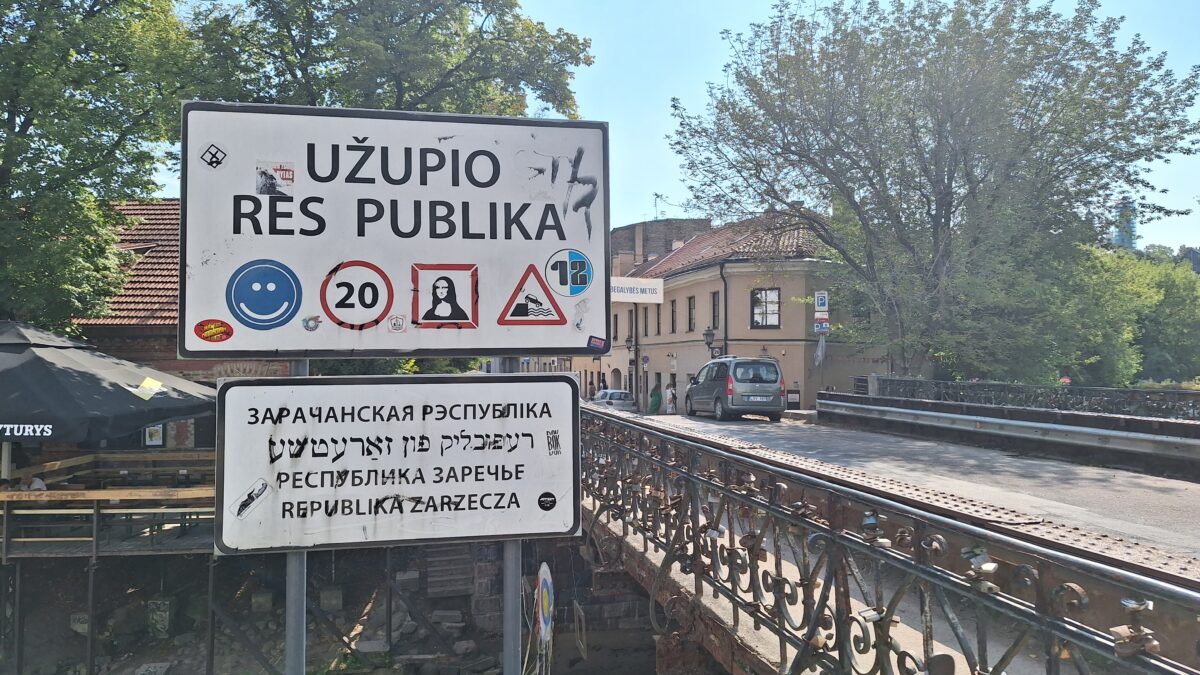
Mirrored plaques in different languages, including in Yiddish and Karaim and many others, are ranged along the wall in one of the side-streets on which is engraved the Užupis Constitution; there are 41 points of which the first is that “Everyone has the right to live by the River Vilnelė, and the River Vilnelė has the right to flow by everyone.” Point four is that “Everyone has the right to make mistakes,” with others specifying the right to be idle, happy, unhappy, silent, to cry and be misunderstood. Point 10 is “Everyone has the right to love and take care of the cat,” and point 13 is “A cat is not obliged to love its owner, but must help in time of need.” (Other points speak of dogs.) More seriously, the other points include that “Everyone shall remember their name”, “Everyone has the right to have a faith,” and “No one has the right to violence.” People stand and muse over these 41 points; they sometimes laugh, and they sometimes cry. In the north of Užupis are the remains of tombstones from the old Jewish cemetery, a reminder of what these hopes for world free of racism are up against.
Kombinatas
I was in Lithuania for the radical Kombinatas 2023 Festival at Saugus Atstumas, a campsite north of Vilnius; this year’s festival was on the theme of “health.” I drove up from Druskininkai past the edge of Kaunas, and stopped for a coffee and a look around Kavarskas, the village where I thought I was to be housed for the night after the festival (I was eventually billeted in the nearby town of Anykščiai). I made my way deep into countryside, the car churning dust clouds from the gravel and then dirt tracks that led to “Saugus Atstumas” which apparently, in a hangover and memory of the recent pandemic, means “safe distance.” There were about a hundred people there, all of them a good deal younger than me, and a majority of them women. There were visitors from other countries. The main stage was on the edge of a campsite where most of the participants were housed for these few days.
The safe space guidelines for Kombinatas are the same as for the queer festival “Sapfofest” that took place at the same location just before. As well as predictable and necessary reminders that there should be “no toxic masculinity,” are nice formulations about learning about oppression from those who are subjected to it, including this: “Reflect upon your own position, and the space you’re taking. Consider checking in with other people in similar positions, if you see them enact fuckery.” There was lots of gender-fluid stuff around here, and it is clear that there is a gay sub-culture in Lithuania, and not only on the left. The 2016 film You Can’t Escape Lithuania is explicitly LGBT-friendly, though not actually so progressive concerning violence to women.
When I arrived at the festival on the Saturday morning there was a panel discussion, in Lithuanian, on disability. A small group on the edge of the stage was for those who wanted translation into English. The discussion ranged from employment to welfare benefits to alliances with other oppressed groups, and to health and mental health. After lunch there was an introduction to solidarity work with Ukraine. There were many Ukraine flags on buildings in Lithuanian cities. It is a popular cause, so it was interesting to see how this was being approached from the left. Last year’s Kombinatas festival had been about the Russian invasion, and included speakers from Ukraine as well as Russian Socialist Movement comrade Ilya Budraitskis and a local left intellectual, Andrius Bielskis who is director of the Centre for Aristotelian and Critical Theory at one of the universities in Vilnius.
This year’s Ukraine solidarity speaker was talking about issues that are very different from the usual solidarity movement discussions in Western Europe. The speaker was connected more with the anarchist Black Cross movements in Ukraine and was concerned mainly with how to build direct military resistance and support for those fighting the invasion. There are apparently now about a hundred leftists from Lithuania inside Ukraine working with the resistance, and the task the speaker addressed at Kombinatas was how to support them.
Because the focus of the festival this year was “health,” the Ukraine solidarity talk focused on mental health issues, which ranged from the impact of post-traumatic stress on those who have undergone training and, for various reasons, are impacted in ways they could not predict, to how those with extreme experiences could be integrated into the left when they returned home. The speaker pointed out, for instance, that while those outside Ukraine tend to respond to deaths of fighters as “sad,” inside Ukraine every death increases “rage.” It was a powerful impassioned intervention that was followed up later that night with discussion about what could be done to give practical help to those inside Ukraine now. I had a sense here of how the ideologically-dominant “anti-Soviet” motifs in Lithuanian culture and the deeper veins of suspicion of Russia could be relayed into something more progressive, something keyed not so much into reaction but into solidarity that was energising the non-Stalinist left.
After two impressive sessions, it was my job to talk about some alternatives to mainstream models of stress and distress. Psychology as a discipline reflects and reproduces preoccupations of Lithuanian society. One of the most prominent Lithuanian clinical psychologists, Danutė Gailienė published the influential 2008 “Ką jie mums padarė. Lietuvos gyvenimas traumų psichologijos žvilgsniu” (“What they did to us: Lithuanian life in the view of trauma psychology”) about the disastrous impact of Soviet rule. I was acutely aware of two things as I spoke, though not sure how to refer to them, so I did not do so directly. One was that Lithuania has an incredibly high suicide rate, much higher than other European countries, and there are stereotypes around of Lithuanians as being introspective and quiet as well as being wary, apparently, of people who smile too much. These stereotypes did not correspond with my experience of being at the festival. The other was the charge that left-wing terminology has in this context. I talked a bit about “Shy Radicals,” fine, and then about the “Red Clinic,” and hesitated when I was describing it, deciding not to say that in its mission statement we say that it is a collective of communist mental health workers. I was gently mocked afterwards when I admitted to this hesitation; no problem using the word “communist” in this context, I was told.
Emma
This festival was one of the expressions of a very “new left,” sensitive to different forms of exploitation and oppression. It was mainly organised by the “Socialinis Centras Emma” in the second city Kaunas. We stayed in Šilainiai on the edge of the city; this Soviet era-housing complex has about 55,000 inhabitants. The “Emma” centre is named for Emma Goldman, who was born in Kaunas and then emigrated to the United States, an indication of the anarchist orientation of many of the activists, though one of them told me that their main political reference points were, in this order, “feminism, Marxism and anarchism.” Political problems in the running of the centre that were mentioned were indicative; one or two men behaving in aggressively sexist ways did need to be excluded.
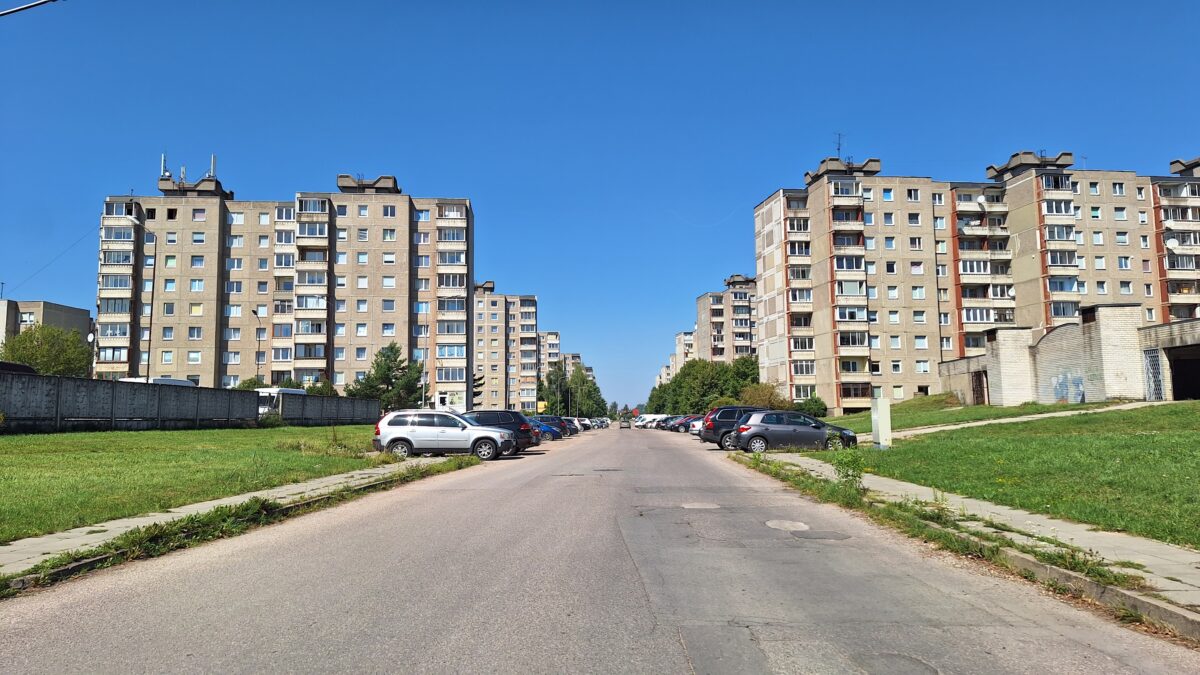
(Also born in Kaunas, by the way, was the philosopher Emmanuel Levinas, and I saw a sticker at the Emma centre for the Emmanuel Levinas centre at the main university, though there are disputes among the Levinas family about this centre; some participated in the opening, and others argued that Levinas hated Lithuania and wanted nothing to do with it.)
I picked up stickers for the independent “First of May” trade union that now counts nearly two hundred members and that works with migrant and precarious workers. This trade union is on good terms with the main trade union confederation, but, unlike the main unions, is explicitly political, oriented to the left. On the bookshelf in the Emma centre was Lenin’s little pamphlet “The Right of Nations to Self-Determination.”
There is also a slightly different “new left” tradition in the form of the Lithuanian “Left Alliance” which was formed two years ago to bring together activists in Vilnius and Kaunas, including those in the Emma Centre. There are at least three different issues that could, at some point, provide some fruitful intersection with the Emma and First of May union activists. I was told that at a recent meeting of the Left Alliance there was discussion about approaching the union with a view to linking up with them to build a new political party. When I mentioned this in the Emma centre in Kaunas they smiled and asked why they had not been approached before. Let’s take this as a good sign. Anyway, the three issues are, first, disentangling itself from the heritage of the old Lithuanian Communist Party which survives in mutated form as the Social Democratic Party (the Lithuanian Social Democratic Party, which has good claim to be the oldest Lithuanian political party, distanced itself from socialism and then, in 2001, merged with the old LCP communist party apparatus which had renamed itself as the Lithuanian Democratic Labour Party, itself busily distancing itself from Soviet “socialism”).
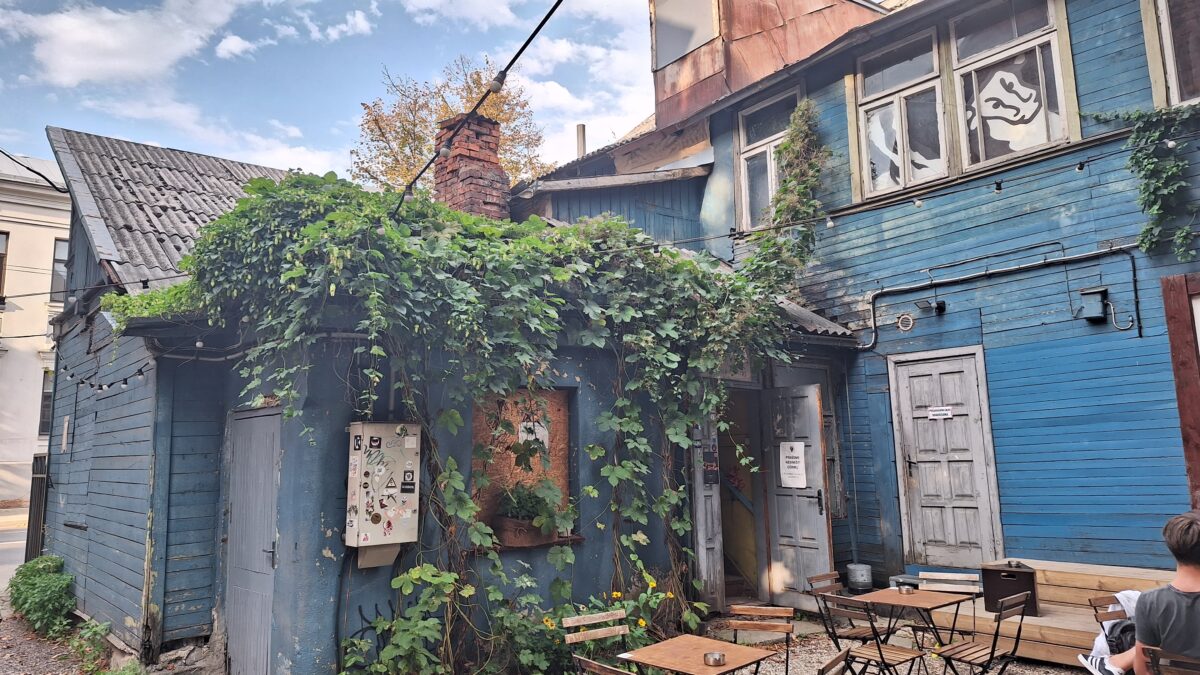
Some current Left Alliance activists were inside the Social Democratic Party until just a couple of years ago, though many were not. Those working inside the party reasoned that, given that spaces of the left were so few and under threat in Lithuania after the 1990 transition, this was a place to debate and work with existing left forces. Now the Left Alliance has the perspective of registering as a separate political party, a process that requires the gathering of 2,000 signatures and, more than that, the inputting by registrants of their details on official document systems. When I spoke to the Emma centre about this electoral ambition, they said they were not actually against this idea themselves, having tried to stand in local elections in Kaunas but failed to gather the requisite number of signatures.
A second issue, and linked to the first, is how to take a distance from the Soviet heritage of left politics without succumbing to outright anti-communism. There is potent anti-Russian feeling levelled at Belarus and also at the Polish minority organised in the “Electoral Action of Poles in Lithuania – Union of Christian Families.” There were also, I was told, some intense debates among Left Alliance activists around an article ostensibly written from the left that assumed equivalence between the Soviet oppression and the Nazi extermination of Jews and other minorities. That assumption required and got a robust response. The third issue concerns, again, Ukraine, and again connected to the first issue, the legacy of the Lithuanian Communist Party.
I was told by one leftist that there has been no tradition of anti-Stalinist left inside Lithuania that they were aware of, no Trotskyist movement, for instance. (An attempt to rebuild a pro-Soviet “Socialist Party of Lithuania” from the wreckage of 1990 is still listed on an openly Stalinist link site, though thankfully that party appears to be defunct, the link warning “deceptive site ahead”.) There were apparently some inside the Left Alliance who were equivocal about naming the Ukraine disaster an “invasion,” and it was after working through some of those differences that an open letter to the Western European left was written that takes a very clear position against the invasion. There is also, linked through personal political histories, an older “new left,” “New Left 95” which now continues as “Demos Institute of Critical Thought” which publishes a new journal “Lūžis,” or “fracture” that has been including material that connects debates inside Lithuania with broader European political concerns.
So, there are different elements of the left ranging from the remains of the old Lithuanian Communist Party, not as down and out as the official prohibition on its existence after 1990 would make it seem, an electorally-oriented Lithuanian Left Alliance, and a younger more anarchist-inflected Emma collective and independent trade union that is in tune with the radical potential of intersectional identity politics. There is plenty of bad news from Lithuania, grim reminders of the weight of history, but it is not all bad news, and there are progressive movements learning from history in order to change it.
Endings
We finished up on the Baltic coast. Klaipėda just north of Kaliningrad is Lithuania’s third city with only about 150,000 inhabitants – the country counts under three million people in total in an area just a little less than the Irish Republic – and a little further north is the summer resort of Palanga. We were the first English tourists the hotel owner had met. We had been told by a comrade in Kaunas that nearby on the coast was Villa Auska, a grotesque concrete palace resort, due soon to be demolished, originally built for Soviet Premier Alexei Kosygin (though humble Alexei was apparently too embarrassed to stay in the main buildings and spent his Lithuanian holidays in a little house in the grounds).
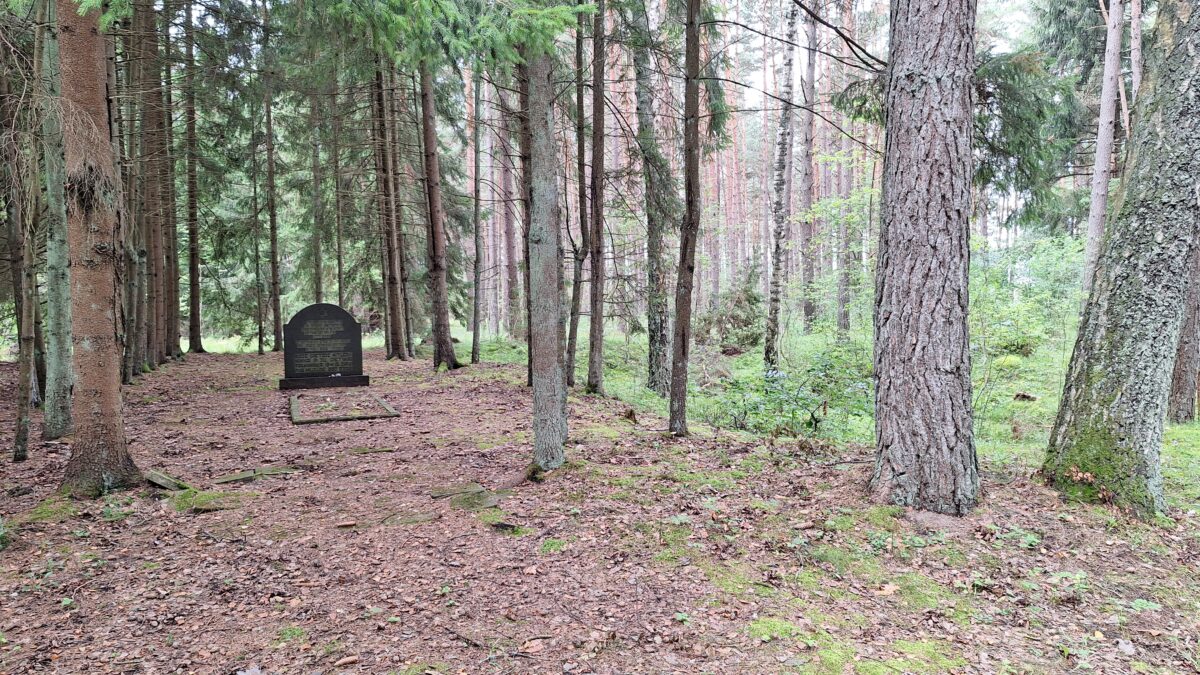
I wandered through the nudist beaches, made a fruitless search for amber in the sand, swam in the very cold Baltic Sea, which was not at all salty because the water flows in from many rivers into the enclosed space, cycled down almost to the airport, and then we left on 21 August. The ‘international’ airport is tiny, and as we drove around searching for the car-hire drop-off we passed yet another brown road-side sign indicating that there was a holocaust memorial to the left. We drove down a track beside a lake until we could go no further in the car, and then walked through the forest. Here was a cemetery, a mass grave for 200 Jews murdered by the Nazis and local accomplices in 1941 exactly 82 years before, on the 21 August.
I was joined early on during my trip to Lithuania and then travelled around with my partner Erica Burman, whose great grandparents came from this region, from Jewish communities that are now just over the border in Belarus. It was a painful and sometimes very upsetting journey, leavened at moments by the kindness and hospitality of local comrades. This account has been immensely helped by discussions with Monika Višnevska who invited me to Kombinatas festival and then welcomed us into her family home, with Jurgis Valiukevičius at the festival and the Emma Centre, and with Andrius Bielskis who bought me šaltibarščiai, glowing pink cold beet soup, for lunch in Užupis.
This was another “socialism, betrayed, mislaid, unmade,” and particularly bitterly so, one that makes it difficult for the left there to regroup and reclaim the vision of communism as a fully democratic collective response to the miseries of neoliberalism and traumatic memories of the past. That there are left forces finding different ways of working through those events and working across borders to build another world is, for all this history, grounds for hope.
Art (47) Book Review (102) Books (106) Capitalism (64) China (74) Climate Emergency (97) Conservative Government (90) Conservative Party (45) COVID-19 (43) Economics (36) EcoSocialism (48) Elections (75) Europe (44) Fascism (52) Film (47) Film Review (60) France (66) Gaza (52) Imperialism (95) Israel (103) Italy (42) Keir Starmer (49) Labour Party (108) Long Read (38) Marxism (45) Palestine (133) pandemic (78) Protest (137) Russia (322) Solidarity (123) Statement (44) Trade Unionism (132) Ukraine (324) United States of America (120) War (349)
Latest Articles
- France after the elections: How should the radical left act?In the wake of the National Assembly’s dissolution and new parliamentary configuration, La France Insoumise (LFI) should adopt a clear stance of radical opposition, emphasizing its commitment to anticapitalist principles and democratic reforms while avoiding any compromise with the existing government unless it secures absolute majority support from the populace, argues Gilbert Achcar.
- Why Socialists Oppose the Two‑Child Welfare CapIn this article, Simon Hannah explores why socialists vehemently oppose the government’s two-child welfare cap, arguing that it stems from austerity measures and reactionary views on the poor.
- Hands off Trans KidsA pamphlet from Anti*Capitalist Resistance.
- Two Child Benefit RevoltDave Kellaway responds to the revolt by Labour MPs and others to the Labour government keeping the Tories’ hated two child benefit cap.
- The beginning of the end of China’s rise?This is the second interview in a two-part series. The first interview (“Opposing US militarisation in the Asia-Pacific should not mean remaining silent on China’s emerging imperialism“) covered the nature of China’s state, its status in the world today, and implications for peace and solidarity activism.






